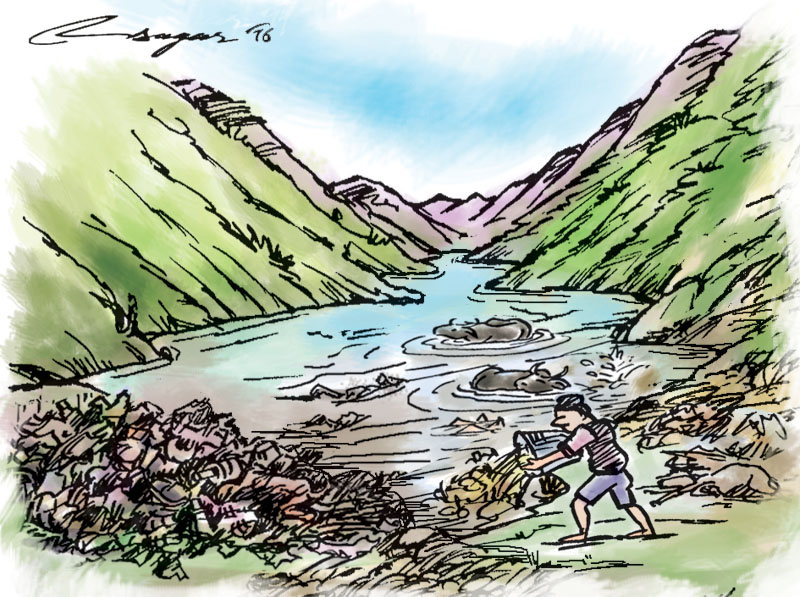Rupa Lake at risk of extinction
Pokhara, July 30
The Rupa Lake, located at the south-east of Pokhara, is at a high risk of drying out with increased encroachment and uncontrolled spread of invasive plant species threatening its existence and beauty.
Pollution, mismanaged tourist activities, and rampant spread of water hyacinth has degraded the beauty and water quality of the lake.
The deposition of mud due to floods and landslides has caused the lake’s bed to rise.
“The lake is shrinking every year, and its depth has also reduced considerably,” said Dina Nath Dhakal, chairman of the Rupa Tal Conservation and Tourism Promotion Committee.
A report made public by the Lekhnath Municipality recently says that of the total 163.9 hectares of land of the lake, only 121.76 hectares are occupied by the lake while crops are grown on 33.43 hectares.
Likewise, 8.75 hectares is occupied by wetland area.
“If the lake continues to shrink at this rate, it will be at a serious risk within a decade,” Dhakal said.
Dhakal added that the ongoing construction of tracks around the lake has also added to its threats.
“The soils used to construct the tracks will slide down into the lake when it rains, contributing to the shrinkage,” he said. Dhakal said that the conservation of the lake must be taken into account while constructing such tracks, and that it is also the responsibility of the local people to create pressure on concerned authorities to complete the construction of the tracks in time.
Similarly, Chairman of the Rupa Tal Punarsthapan and Matsya Palan Sahakari Sangh- a cooperative for the restoration of the Rupa Lake and fisheries development Kul Prasad Adhikari also expressed his concern over the degrading beauty of the lake.
Adhikari stressed upon the need for concerned authorities to do the needful to conserve it, and said an embankment around the lake must be built.
“The cultivation of crops in the area should also be banned,” he said.
Included in the Ramsar list and located at the border of Rupkot, Hansapur and Majhathana in Kaski, the lake serves as a famous tourist destination, providing a great source of income to local people.
Locals earn their daily livelihood by operating boats and running fisheries in the lake. The freshwater lake has a catchment area of 30 square kilometres.
Around 150 kilograms fish are caught on a daily basis, a local resident said.
19 boats are in operation on the lake for visitors including foreign tourists, and tourists can swim and fish in the lake as well.
The area is home to 134 types of wild animals and birds, 361 types of vegetation, and 175 types of forest medicinal herbs.
Meanwhile, in a bid to conserve lakes including the Rupa Lake, concerned authorities and local people have joined hands.
Works are underway to construct an international-standard zoological garden in Lekhnath Municipality on the banks of the lake on the initiatives of the local United Club Pokhara and with the participation of the locals, said club Chairman and Coordinator of the Zoological Garden Construction Committee, Himalaya Bakhrel.
Bakhrel believes that the construction of the garden would help attract many foreign and domestic tourists to the area.
With nine lakes including Rupa in Kaski enlisted as Ramsar sites, the government has made preparations for the management and conservation of the lakes.
The Conservation Development Foundation under the Hariyo Ban Programme has been entrusted with preparing a plan for this purpose.
The foundation Chairman Shailendra Pokharel says that his office is working to prepare a plan after holding consultations with the concerned authorities.






